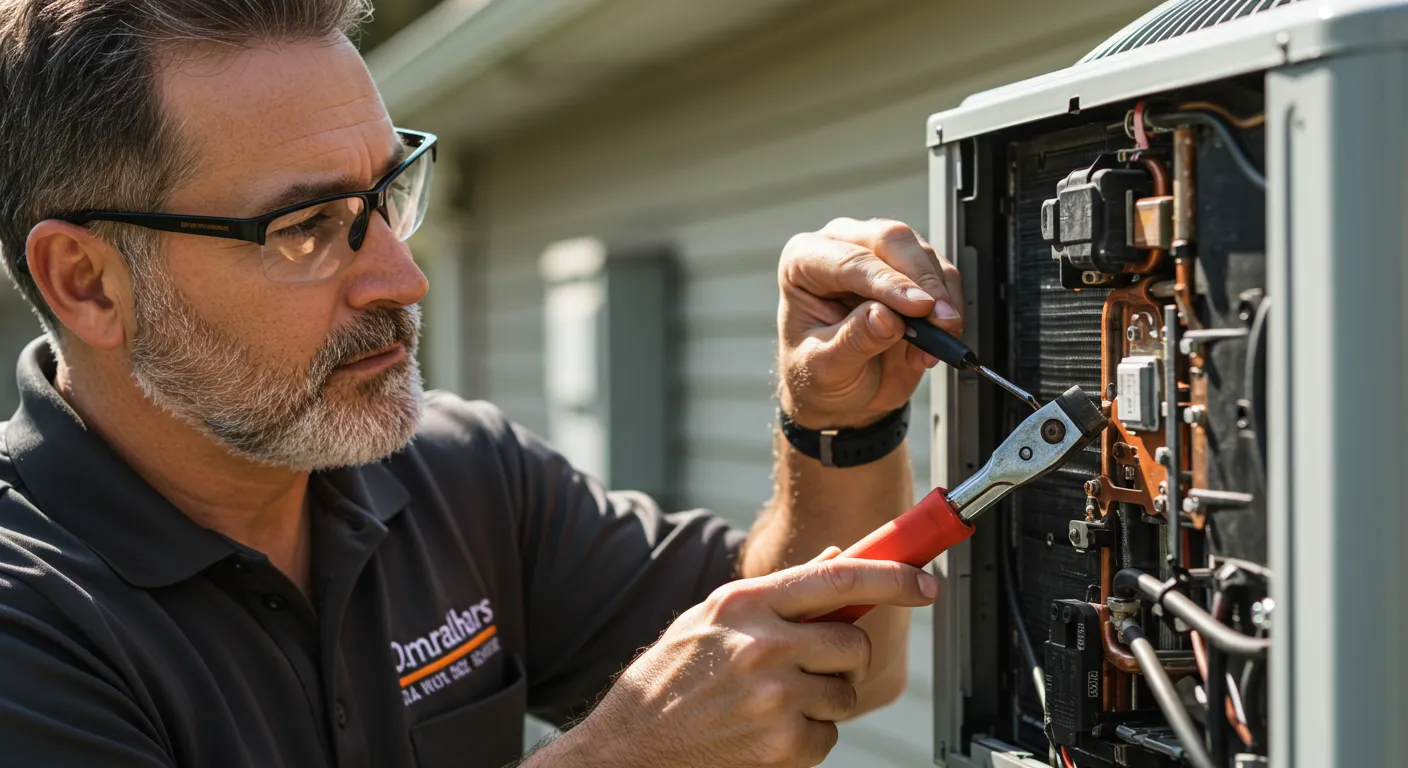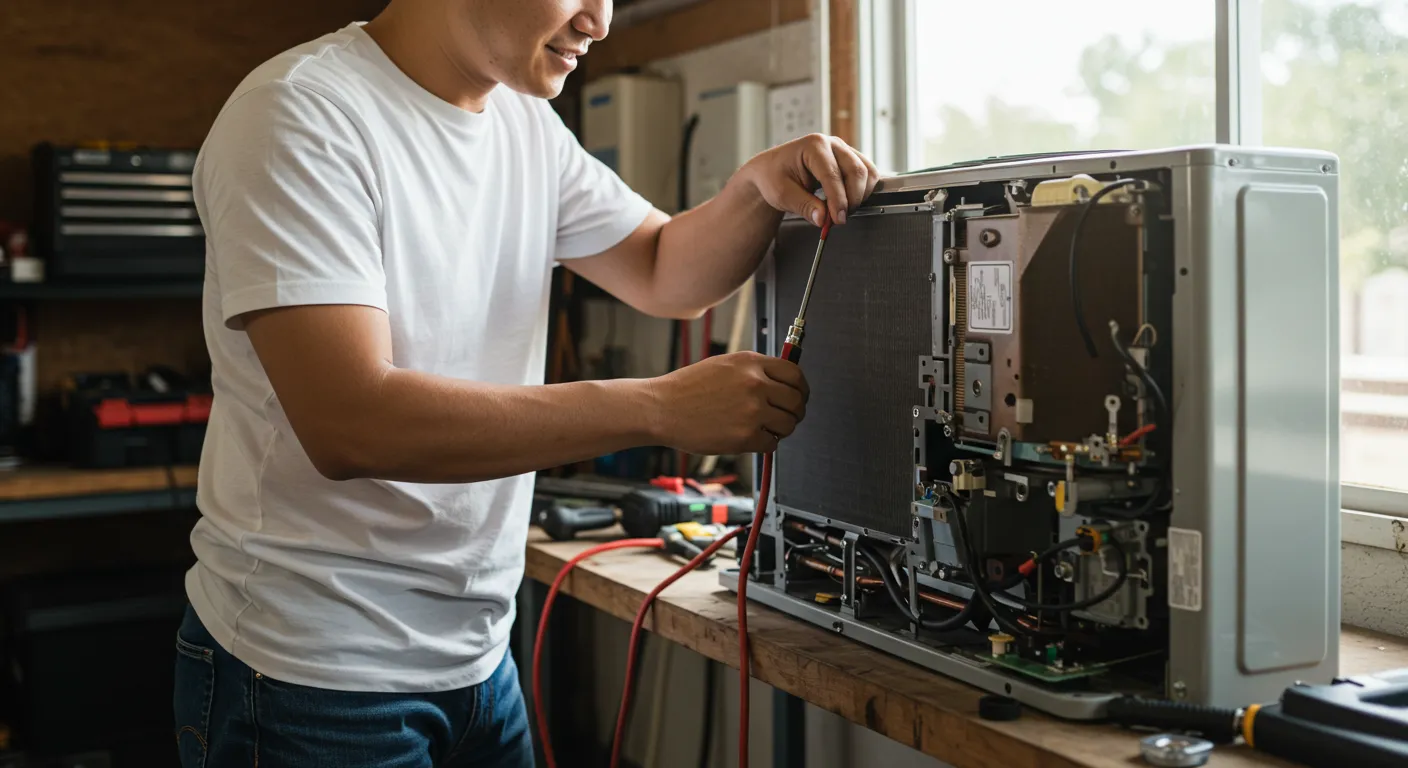AC Installation in Acton, CA






AC Installation in Acton, CA
Replacing or installing an air conditioner is one of the most impactful upgrades you can make for year round comfort and energy savings. In Acton, CA, homes face hot, dry summers, large day to night temperature swings, and frequent dust that all affect cooling performance. This AC installation guide explains the full process from initial site assessment and Manual J load calculations to start up, performance testing, and warranty registration so you know exactly what to expect and why each step matters for long term comfort and efficiency.

Why a proper AC installation matters in Acton, CA
- Acton summers in the Antelope Valley regularly push cooling systems to their limits. An undersized or poorly installed unit will struggle, run continuously, and wear out sooner.
- Dusty conditions and high solar gain on west and south exposures increase cooling loads and can clog filters and coils faster than in other regions.
- Large diurnal temperature swings mean correct system sizing and controls (programmable or smart thermostats) are crucial to maintain comfort without wasting energy.A correctly engineered installation reduces energy bills, extends equipment life, and provides consistent comfort through extreme heat events.
Common AC installation issues in Acton homes
- Undersized units due to rule-of-thumb sizing rather than calculation, causing short cycling and inadequate cooling.
- Oversized equipment that cools quickly but leaves humidity and thermal comfort problems.
- Inadequate ductwork sealing or undersized ducts that limit airflow and create uneven rooms temperatures.
- Poor refrigerant charge or incorrect blower configuration leading to reduced efficiency and premature component failure.
- Lack of outdoor unit clearance or improper placement exposing equipment to excessive dust and sunlight.
Our diagnostic approach and pre-install assessment
A reliable installation begins with a detailed site assessment:
- Visual inspection of existing equipment, ductwork, attic insulation, windows, and shade patterns.
- Measurement of attic and roof solar exposure to estimate cooling loads unique to your Acton home.
- Review of indoor comfort issues and occupancy patterns to recommend appropriate zoning or thermostat strategies.
- Photographs and notes to document any preexisting conditions that could affect layout or permit requirements.
Manual J load calculations and equipment selection
Manual J load calculations determine the correct size and capacity for your new system by accounting for:
- Home square footage, ceiling heights, insulation values, window size and orientation, and local climate data.
- Internal heat gains from appliances and occupants plus ventilation requirements.
- In Acton, Manual J helps account for higher solar loads and dusty outdoor air so the selected unit maintains comfort without excessive runtime.Equipment selection guidance includes:
- Prioritizing high efficiency models with appropriate SEER ratings for the local climate and utility incentives.
- Considering variable-speed compressors and multi-stage systems to better handle temperature swings and humidity control.
- Matching indoor coil, blower, and ductwork to the outdoor unit for proper airflow and refrigerant charge.
- Recommending trusted brands and models such as Lennox and Daikin where their product lines match the calculated needs.
Step-by-step installation workflow
- Permits and prework: Secure required permits from the local building department or Los Angeles County jurisdiction and verify code requirements.
- Site preparation: Protect landscaping, lay down walkways, and prepare placement pad for the outdoor unit with correct clearance.
- Remove old equipment: Safely decommission and recover refrigerant from the old system where applicable.
- Duct and plenum work: Modify or replace ducts, install new plenums or transition pieces, and seal all connections with mastic or approved tape.
- Mount indoor coil and outdoor unit: Properly size and install line set, drier, and electrical disconnect per code.
- Refrigerant and electrical hookup: Pull vacuum, charge refrigerant to manufacturer specs, and complete electrical connections.
- Thermostat and control integration: Install programmable or smart thermostat and integrate zoning dampers if included.
- Final trim and cleanup: Finish penetrations, insulate lines, and restore work areas.
Start-up, balancing, and performance testing
Proper start-up ensures the system operates as intended:
- Verify refrigerant charge against manufacturer superheat/subcooling guidelines for the matched system.
- Measure airflow, static pressure, and temperature split to confirm the unit is moving the correct CFM for the calculated load.
- Conduct duct leakage testing and balance supply and return registers to eliminate hot and cold spots.
- Check electrical loads and motor amperages to ensure safe, efficient operation under peak conditions.
- Run a performance checklist under typical Acton summer conditions to validate comfort and energy figures.
Code compliance, permits, and documentation
All installations must adhere to local building and mechanical codes. Typical steps include:
- Submitting permit applications and system specifications to the local jurisdiction.
- Passing required inspections for mechanical, electrical, and refrigerant work.
- Providing a completion packet that includes equipment model numbers, permit documentation, test results, and warranty registration details.
Customer orientation and handoff
A thorough orientation helps homeowners operate and maintain the new system:
- Walk through thermostat settings and explain recommended temperature schedules for comfort and savings in Acton’s climate.
- Show filter types and replacement intervals, and explain how increased dust may require more frequent filter changes.
- Provide a simple maintenance checklist covering seasonal inspections, coil cleaning, and system monitoring.
- Deliver manufacturer warranty information and assistance with registering equipment to activate warranty coverage.
Warranty, registration, and long term care
- Manufacturer warranties typically cover parts and compressors; labor warranties vary and should be documented at installation.
- Registering equipment promptly activates some extended protections and helps with future claims.
- Regular preventive maintenance, such as professional tune ups before summer and the change of filters during heavy dust seasons, is the most effective way to protect your investment and maintain efficiency.
Benefits summary and maintenance tips for Acton homeowners
A correctly sized and installed air conditioning system:
- Delivers more consistent comfort and better humidity control during hot Antelope Valley summers.
- Uses less energy, lowering monthly bills and reducing wear on system components.
- Minimizes emergency repairs and extends the service life of the equipment.
Quick maintenance tips for Acton:
- Replace or clean filters every 1 to 3 months depending on dust levels.
- Keep outdoor condensers shaded and free of debris while ensuring airflow clearance.
- Schedule professional maintenance annually, ideally before peak summer temperatures.
This detailed AC installation process tailored for Acton, CA ensures your new system is efficient, code-compliant, and optimized for the local climate so you can rely on steady, comfortable indoor temperatures year after year.



